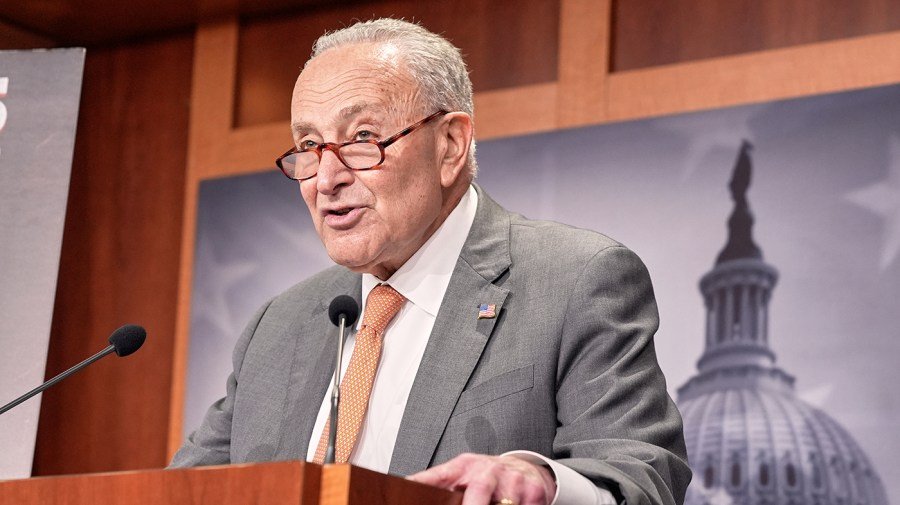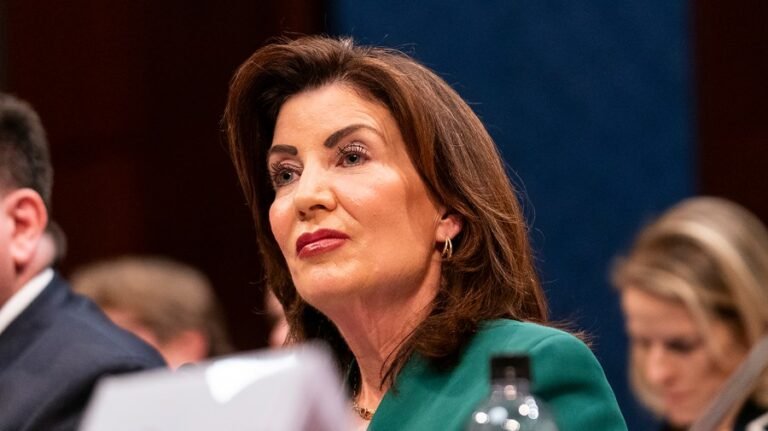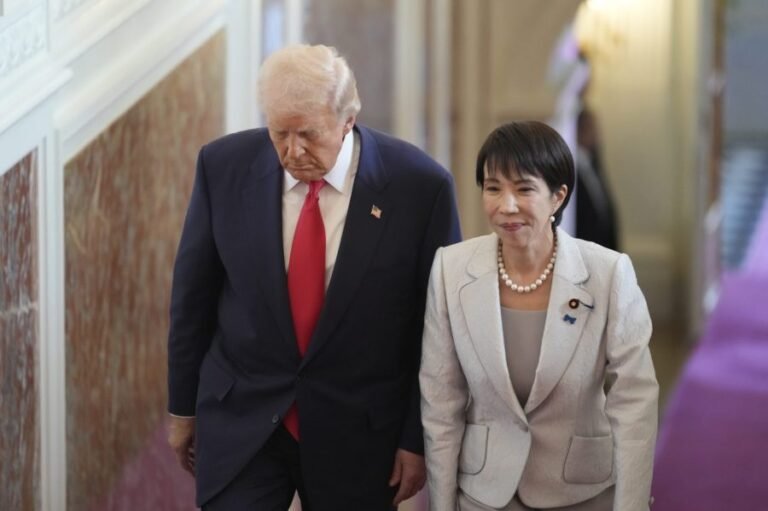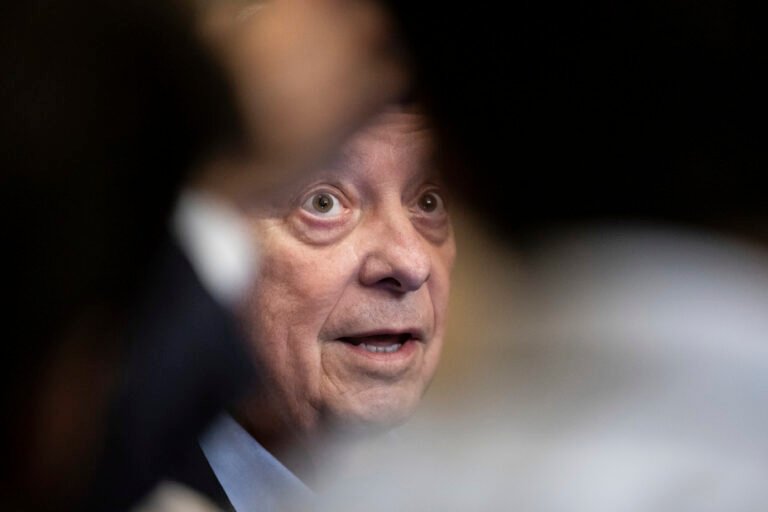
Lawmakers are laying the groundwork for making sure the other party gets the blame in the event of a government shutdown at the end of the month.
As both sides work out a game plan for funding the government before a Sept. 30 deadline, lawmakers have increasingly been trading insults and pointing fingers over who would be at fault if the lights go out.
In remarks from the Senate floor Thursday, Senate Minority Leader Chuck Schumer (D-N.Y.) sounded the alarm over the prospect of “a Republican-caused shutdown,” accusing his colleagues across the aisle of “once again threatening to go-at-it-alone” and refusing “to work in a bipartisan way” to keep the government open.
A day earlier, Speaker Mike Johnson (R-La.) accused Democrats of “beginning to apply their government shutdown pressure” and said the blame for a funding lapse would rest on their shoulders for rejecting “commonsense solutions to fund the government.”
A shutdown could pose political risks for both sides.
Republicans control a trifecta in Washington — the House, Senate and White House — meaning that blaming Democrats for a shutdown could be a hard sell.
But Senate Democrats don’t want to be seen as the only thing standing in the way of keeping the government open if the GOP-controlled House passes a funding bill — while also wanting to be seen as standing up to President Trump and Republicans.
The back and forth comes as lawmakers on both sides of the aisle are expressing concerns about a shutdown amid heightened tensions over spending.
“If I had to bet today, there’s a 50-50, perhaps higher, chance that we’ll have a shutdown,” said Sen. John Kennedy (R-La.), a senior appropriator, before taking aim at Democrats for what he called “unreasonable requests” on health care.
Democrats have been ramping up calls for bipartisan funding talks to avert a shutdown, while, in the same breath, sounding alarm over ObamaCare tax credits expected to expire later this year, along with Medicaid changes in Trump’s sweeping tax and spending bill.
“It’s really important to me to lessen some of the harm that was done in Donald Trump’s big, ugly bill so particularly with regard to health care and people’s ability to sustain coverage and afford it,” Sen. Tammy Baldwin (D-Wis.), another senior appropriator, said.
House Minority Leader Hakeem Jeffries (D-N.Y.) also cited health care in a “Dear Colleague” letter last week in which he prepared his caucus to “confront the possibility of another painful Republican government shutdown.”
“House Democrats have repeatedly made clear that we are prepared to pass a bipartisan spending bill in advance of this deadline,” he wrote. “We will not rubber stamp partisan Republican legislation that hurts everyday Americans and continues their unprecedented attack on healthcare.”
Members on both sides are warming up to the prospect of a short-term funding patch, also known as a continuing resolution (CR), sometime into November. Appropriators are hopeful of using the expected stopgap plan as a vehicle to pass three annual funding bills for departments of Veterans Affairs and Agriculture, as well as the legislative branch.
But some are being cautious when pressed about the ambitious bid as they push for leadership to pick up bipartisan funding talks.
“I think the first thing we have to do is have a conversation between the four leaders,” Sen. Brian Schatz (D-Hawaii) said, while pointing to repeated requests by Democratic leaders to begin funding talks with GOP leadership in recent weeks.
“I think if we produce a bipartisan product, we can get a bipartisan vote,” Schatz told reporters last week, but he added that a “prerequisite to a bipartisan product is you have to have both parties sitting down and working on a bill.”
“They jammed us last time, and I am encouraging my Republican friends who want to do appropriations to understand that that won’t work this time,” he said.
Senate Democrats took a beating from their base during the last funding showdown in March, when they helped pave the way for Republicans to pass a GOP-crafted plan to keep the government open through early fall.
While the deal was cheered by some Republicans at the time for cuts to nondefense dollars, members on both sides are hoping to see Congress update government funding levels in the coming months.
But there are hardline conservatives in both chambers that have been calling for the party to back a longer-term stopgap into next year. Rep. Andy Harris (R-Md.), a spending cardinal and member of the House Freedom Caucus, has called for freezing funding at mostly fiscal 2025 funding levels beyond next year’s midterm elections.
“It should go Dec. 1, after the election,” he told The Hill, adding such a move “avoids the question of the Democrats causing a shutdown right before the election.”
“I think they’d be blamed for it right before the election. But why put the American people through that,” he said.
A senior administration official also said the White House is “looking at clean CR into the new year at current levels.” The hope, conservatives behind the push say, is to avoid a sprawling end-of-year government omnibus funding deal that increases spending.
However, Democrats have already slammed floated pitches for a longer-term funding patch as a “nonstarter.”
At the same time, Appropriations committees in both chambers are falling behind in their annual funding work. Neither committee has yet advanced all 12 of the annual funding bills.
And while some appropriators are pushing for both chambers to begin conferencing some of the completed bills, they still have to strike a bipartisan deal on a top-line funding amount for fiscal 2026 that typically would precede bicameral funding negotiations on individual bills.
“We’re not trying to have a Christmas [omnibus],” House Appropriations Chair Tom Cole (R-Okla.) said last week. “I mean, we want to move product, but sometime after we move those first three [funding bills] and got a CR, we would have to have a top line to realistically continue the negotiation.”
“And that takes, again, either people above us making that decision or empowering us to do it,” he said. “And neither one of those things have happened.”


